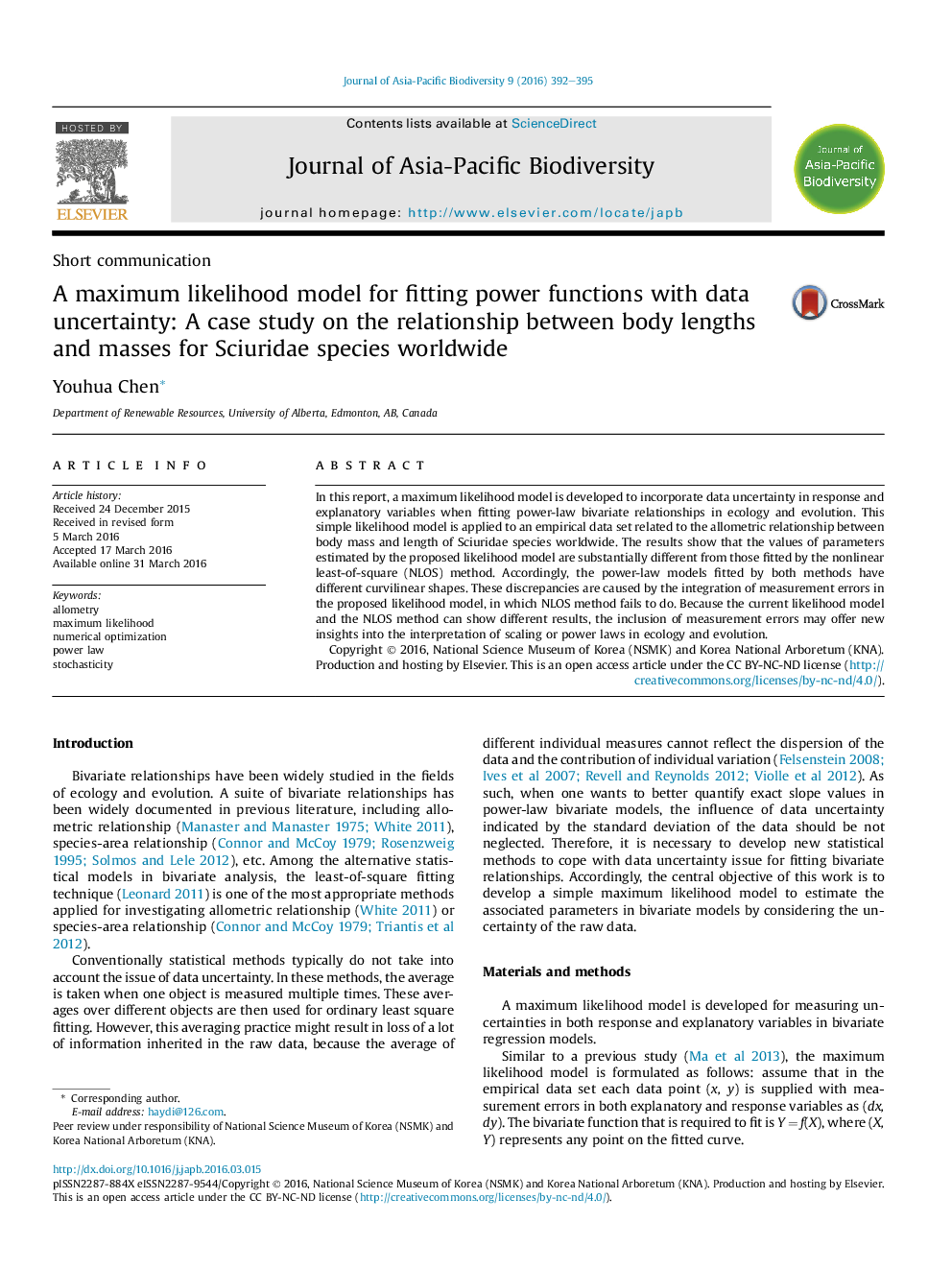| Article ID | Journal | Published Year | Pages | File Type |
|---|---|---|---|---|
| 4394937 | Journal of Asia-Pacific Biodiversity | 2016 | 4 Pages |
In this report, a maximum likelihood model is developed to incorporate data uncertainty in response and explanatory variables when fitting power-law bivariate relationships in ecology and evolution. This simple likelihood model is applied to an empirical data set related to the allometric relationship between body mass and length of Sciuridae species worldwide. The results show that the values of parameters estimated by the proposed likelihood model are substantially different from those fitted by the nonlinear least-of-square (NLOS) method. Accordingly, the power-law models fitted by both methods have different curvilinear shapes. These discrepancies are caused by the integration of measurement errors in the proposed likelihood model, in which NLOS method fails to do. Because the current likelihood model and the NLOS method can show different results, the inclusion of measurement errors may offer new insights into the interpretation of scaling or power laws in ecology and evolution.
